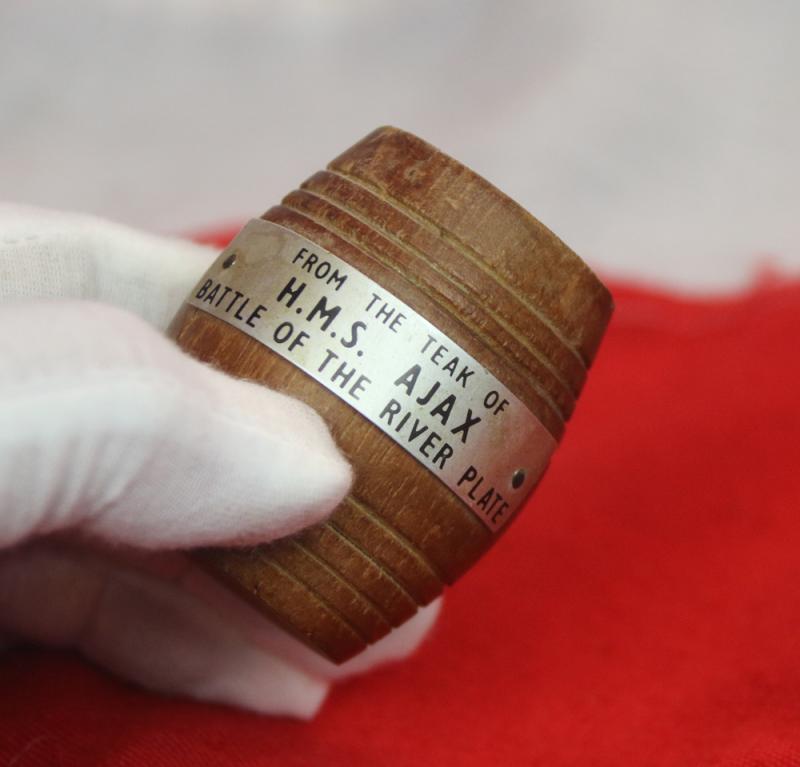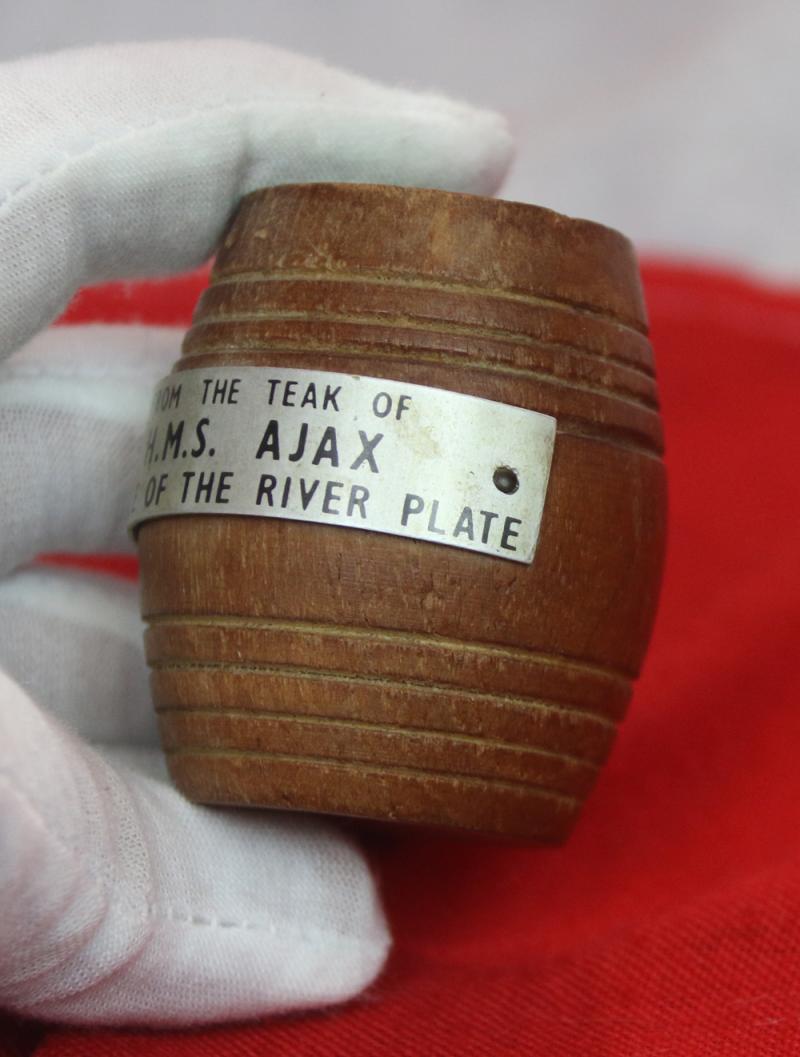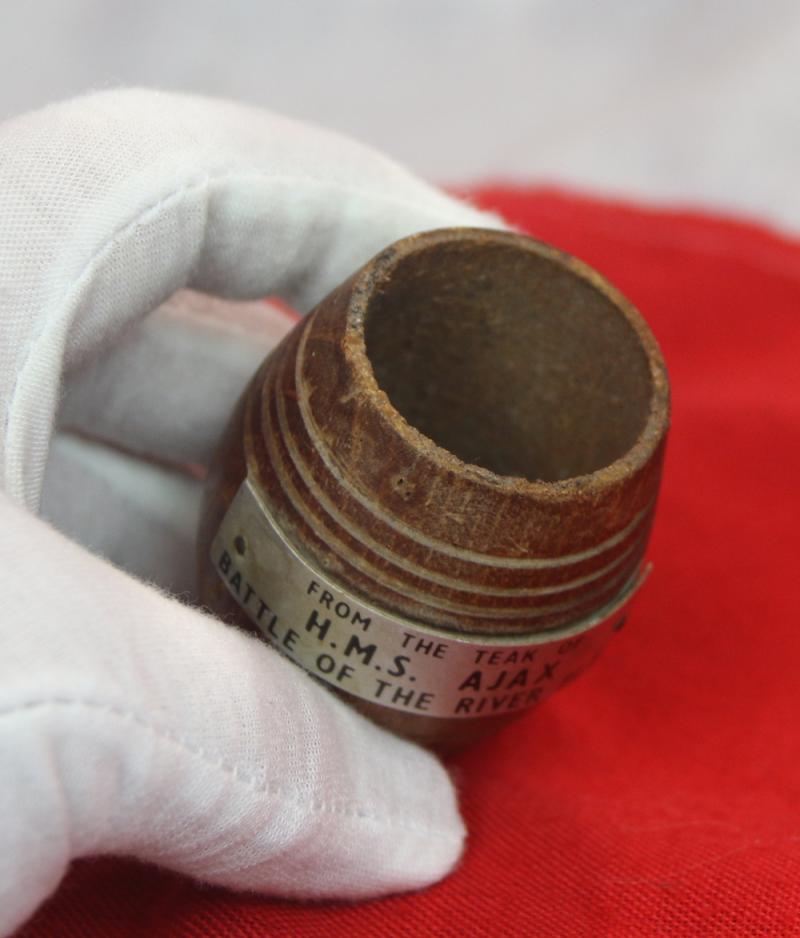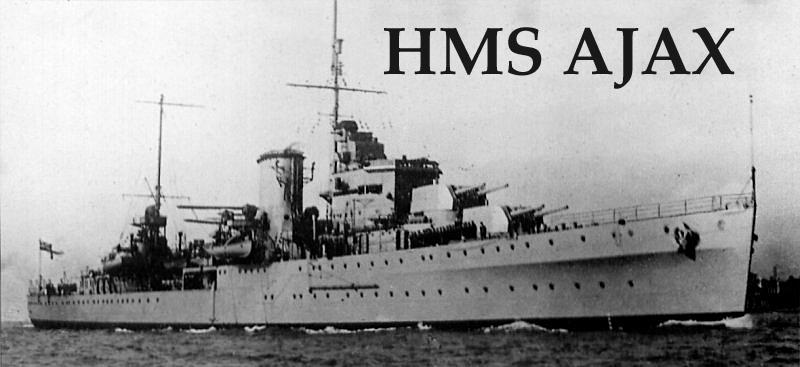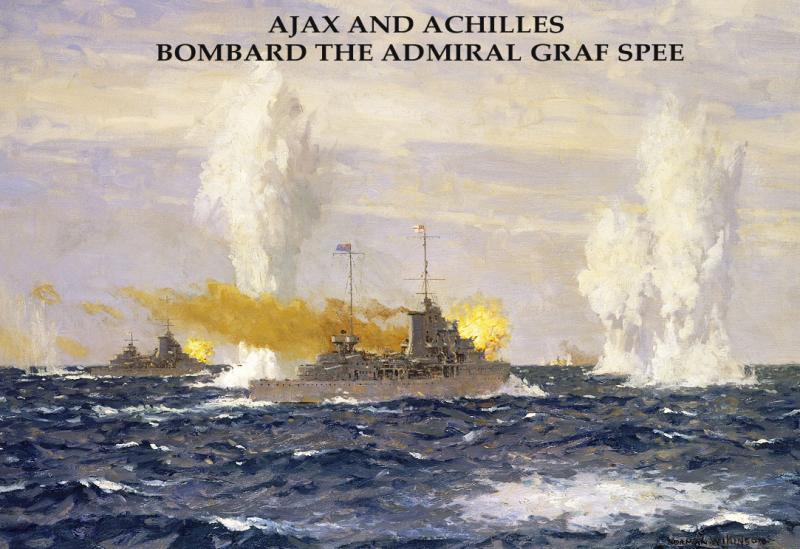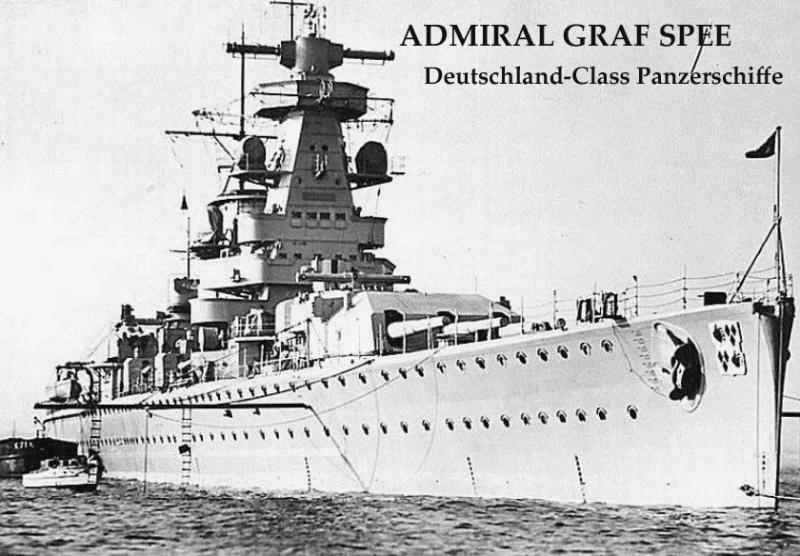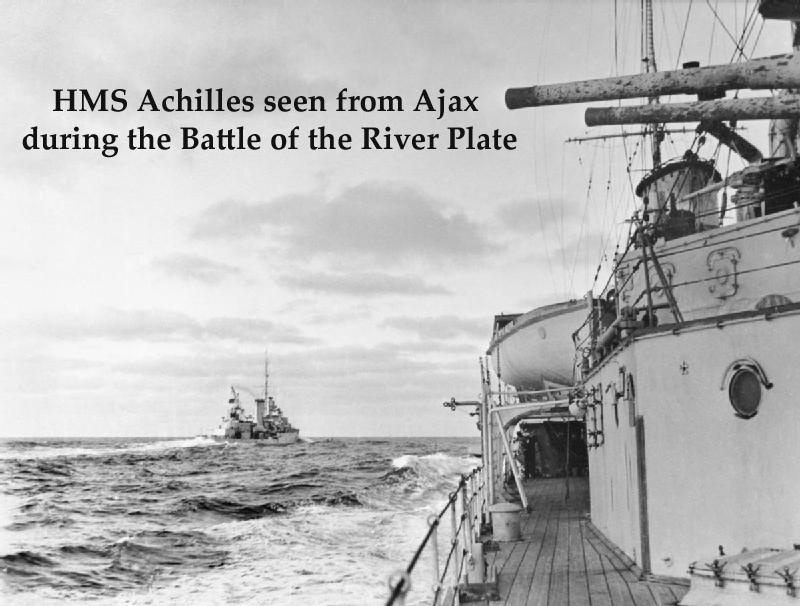Battle of the River Plate, HMS Ajax Miniature Wooden Barrel Made From Teak from the Ship
One of the most desirable of the miniature pieces made from salvaged parts from British warships, HMS Ajax is in the premier division of maritime collectables.
A wooden miniature barrel made from wooden, teak parts of HMS Ajax, With a name plate thereon. The Battle of the River Plate.
The battle in 1939 was how 3 battleships, 3 aircraft carriers and 14 cruisers in seven Hunting Groups searched for a German raider that was the the Admiral Graf Spee and how the weakest force of three cruisers found her and the action which led to her destruction.
The Second World War against Nazi Germany had been waged for three months. At sea Britain had lost the passenger liner, Athenia, the armed merchant cruiser, HMS Rawalpindi, the battleship HMS Royal Oak and the aircraft carrier HMS Courageous. There was very little good news for Britain and France.
In the South Atlantic Captain Langsdorff in the German pocket battleship, Admiral Graf Spee had been sinking British merchant ships since September 1939. Commodore Harwood, commanding Royal Navy Hunting Group G, had studied the area and knew the attraction to a German raider of the rich pickings of British merchant ships leaving the River Plate estuary between Argentina and Uruguay in South America. The Germans claimed that their pocket battleships could out-gun any ships faster than them and outrun any ship with heavier armament.
In early December 1939 Harwood received enemy reports from the British freighters Doric Star and Tairoa as they were captured and sunk. He calculated that if the raider chose to head for South America she would probably arrive in the area off the River Plate on the morning of the 13th December. With this in mind, Harwood ordered the cruisers, HMS Ajax, Achilles and Exeter to concentrate there the previous day (12th December). They met at the pre-arranged time and exercised their action plan. On the morning of 13th December HMS Exeter was ordered to investigate smoke that was spotted on the horizon. She soon signaled, “I think it is a pocket battleship”. The three ships had finally met Admiral Graf Spee and at 0617 they went into action, following Harwood’s orders, “Attack at once, by day or night”. At first Graf Spee concentrated her fire on Exeter. Ajax and Achilles then closed on Graf Spee at speed, drawing her fire and causing significant upper deck damage and loss of morale. Graf Spee's Captain Langsdorff later said, “They came at me like destroyers”. At 0636 Graf Spee about-turned to the west, from where she started her retreat. With 66 of her crew killed, Exeter later retired from the battle badly damaged and made for the Falklands.
By 0725 Ajax and Achilles had closed to within 4 miles from Graf Spee. Harwood then decided to open the range and shadow her. However Graf Spee steadied and concentrated her fire again on Ajax and Achilles. Ajax fired a salvo of torpedoes to encourage Graf Spee to maintain her westward course, which she did, but shortly afterwards Graf Spee obtained a hit on Ajax which put her two after-turrets out of action. Achilles also suffered severe damage to her director control tower from a near-miss. This was Graf Spee's chance to turn on the pursuers and regain the initiative but it was not taken. Captain Langsdorff chose to break off the action and head for port in Montevideo, the capital of neutral Uruguay. Whether this was the result of a confused state because of wounds and concussion, a sense of defeat or to preserve the lives of his men we do not know.
On return home the men of HMS Ajax and HMS Exeter were feted in London by King George VI and Winston Churchill (First Lord of the Admiralty at the time). HMS Achilles' crew were similarly feted in their home town of Auckland, New Zealand.
Code: 24923
125.00 GBP


